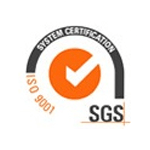49 Welding Knowledge To Solve Common Welding Problems Of Pipe Fitting Materials

Weldability and test evaluation
1. Welding: by heating or pressurizing, adding or not adding filler materials, so that two objects interatomic combination to form an indivisible whole process.
2. Weldability: It refers to the ability of homogenous materials or heterogeneous materials to form a complete joint and meet the expected use requirements under the manufacturing process conditions.
3. The four major factors affecting weldability are: material, design, process and service environment.
4. The principles of weldability evaluation mainly include: (1) evaluating the tendency of welding joint to produce process defects, to provide a basis for the development of reasonable welding technology; (2) Evaluate whether the welded joint can meet the requirements of structural performance; The design of a new welding test method conforms to the following principles: comparability, pertinence, reproducibility and economy.
5. Carbon equivalent: The content of alloying elements in steel is converted and superimposed according to the equivalent of several carbon contents, which is used as a parameter index to roughly evaluate the cold crack tendency of steel.
6. Oblique Y-groove butt crack test: the purpose is mainly used to identify the weld and HAZ formation tendency of cold crack in the *** layer of low alloy and high strength steel, and can also be used to formulate welding process. 1) Specimen preparation, welded steel plate thickness δ=9-38mm. The butt joint groove is processed by mechanical method, and both ends of the test plate are welded with a restrained weld within 60mm, and double-sided welding is adopted. Pay attention to prevent Angle deformation and underpenetration. Ensure that there is a 2mm gap in the weld of the intermediate sample to be welded. 2) Test conditions: the welding electrode selected for the test weld is matched with the base material, the electrode should be strictly dried, the diameter of the electrode is 4mm, the welding current is (170±10) A, the welding voltage is (24±2) V, the welding speed is (150±10) mm/min. The test weld can be welded at a variety of different temperatures, the test weld is only welded, do not fill the groove. After static and natural cooling for 24h, the samples were intercepted for crack detection. 3) Detection and calculation of crack strip rate. Detect cracks on the surface and section of the weld and heat affected zone with the naked eye or with a hand-held magnifying glass of 5-10 times. It is generally believed that when the surface crack rate of low-alloy steel is less than 20% in the “small iron grinding” test, there is generally no crack.
7. Pin test: The purpose is to evaluate the hydrogen induced delayed crack tendency of steel. With other equipment, reheat crack sensitivity and laminar sensitivity can also be measured. 1) Specimen preparation, will be welded steel processing or cylindrical latch test rod, along the rolling direction sampling and indicate the location of the latch in the thickness direction. There is a ring or screw notch near the upper end of the test rod. Insert the latch test rod into the corresponding hole in the bottom plate so that the notched end is flush with the surface of the bottom plate. For the pin test rod of the annular notch, the distance a between the notch and the end face should make the penetration depth of the weld and the cutting plane of the notch root tangent or intersect, but the part of the circumference of the notch root that is melted through shall not exceed 20%. For low alloy steel, the a value is 2mm when the welding heat input is E=15KJ/cm. 2) In the test process, according to the selected welding method and strictly controlled process parameters, a layer of surfacing welding pass is fused on the bottom plate. The center line of the pass passes through the center of the sample, and the penetration depth should be so that the notch *** is located in the coarse crystal zone of the heat affected zone, and the length of the pass L is about 100-150mm. When welding, the cooling time value of 800-500℃ t8/5 value should be determined. When welding is not preheated, the welding should be loaded when cooling to 100-150℃; When preheating before welding, it should be loaded at 50-70℃ higher than the preheating temperature. The load shall be applied within 1min and before cooling to 100℃ or above the preheating temperature of 50-70℃. If there is post heat, it should be loaded before post heat. When the test rod is loaded, the bolt may break during the duration of the load. Note the load time.
Classification navigation:
1、Alloy steel pipe 2、Stainless steel tube 3、Stainless steel welded pipe 4、Reducing pipe
5、High Pressure Thick Wall Pipe Fitting 6、Elbow 7、Flange 8、Spigot Pipe Fitting
9、Tee 10、Tube Cap 11、Pipe Fitting













